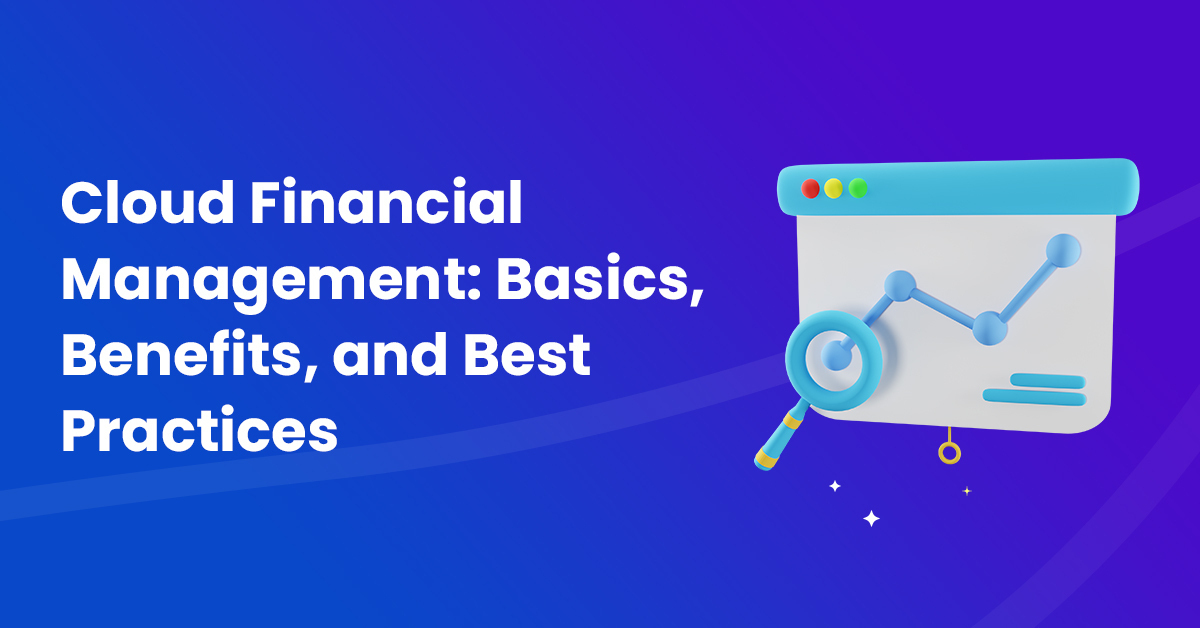Understanding your cloud costs and who is generating them is crucial for engineering, product, finance, and business leaders to make good spending decisions. However, translating the vast amount of available cloud consumption data into business value can often be difficult.
The AWS Cost and Usage Report (CUR) records every billable resource in your cloud environment. This includes every single EC2, S3, Reserved Instance, Savings Plan, data transfer fee, and more. In some cases, such as EC2 instances running Linux, billing is tracked on a per-second level.
Cloud management tools are indispensable for translating the billions of data available. They provide real-time visibility and actionable insights for understanding and optimizing your cloud spending. But if you’re wondering which tool to choose, you’re not alone. That’s why we wrote this complete guide covering the basics, best practices, and best tools to supercharge your cloud financial operations.
What is Cloud Financial Management?
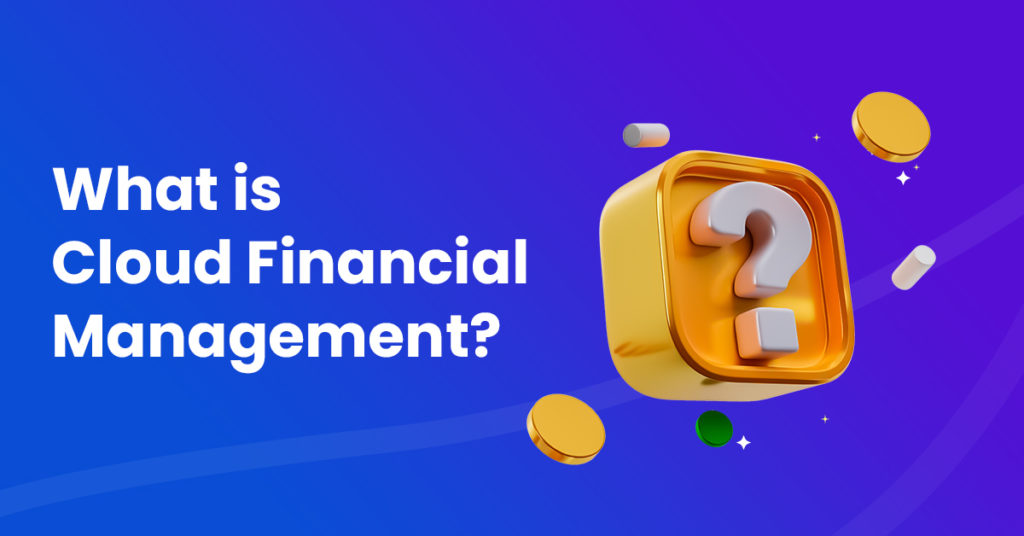
Cloud Financial Management (CFM) is about adapting traditional finance processes for the dynamic nature of cloud computing to ensure cost transparency, control, optimization, and planning in AWS environments. It’s not just about cost reduction but maximizing the business value provided by the cloud. Today, cloud financial management tools leverage massive amounts of highly granular data and advanced analytics to help you better understand financial trends, optimize processes, boost ROI from cloud investments, and make more informed spending decisions on your cloud journey.
Cloud Financial Management Benefits
With so much information on your dynamic cloud usage available, tech tools can help translate cost data into business value and answer questions like:
- Why is the AWS bill $X this month
- Are individual teams and business units using the right amount of resources? Who is responsible for shared costs?
- What value is $Y charge bringing to my organization?
- How cost-optimized am I?
…and many more key questions you’re probably asking about your cloud bill. Fundamentally, cloud financial management tools give you the information you need to make better spending decisions.
What Are The Top Cloud Financial Management Tools?
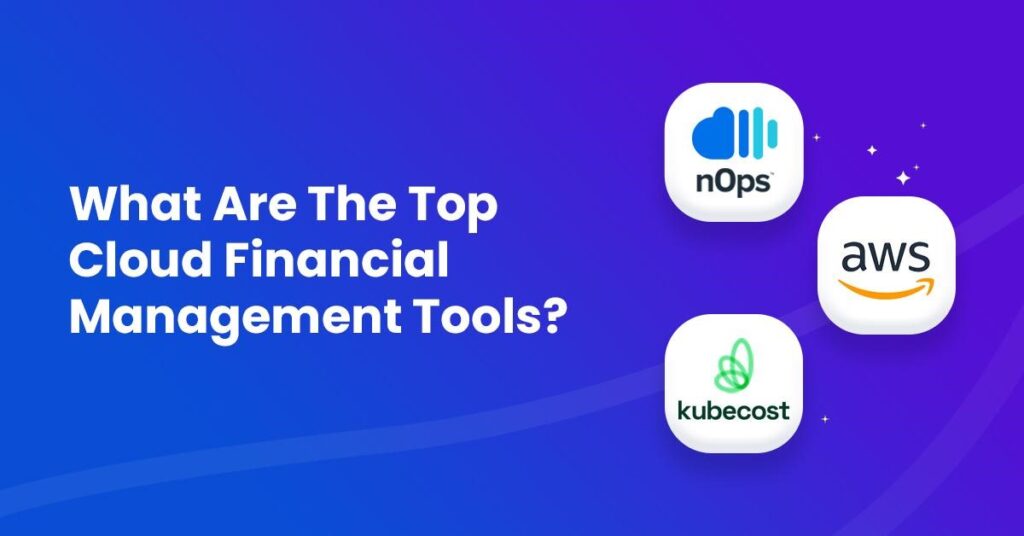
Let’s dive into the details of the best cloud financial management tools with the specific features they offer, advantages and disadvantages, and how they might fit into your organization’s cloud strategy.
1. nOps
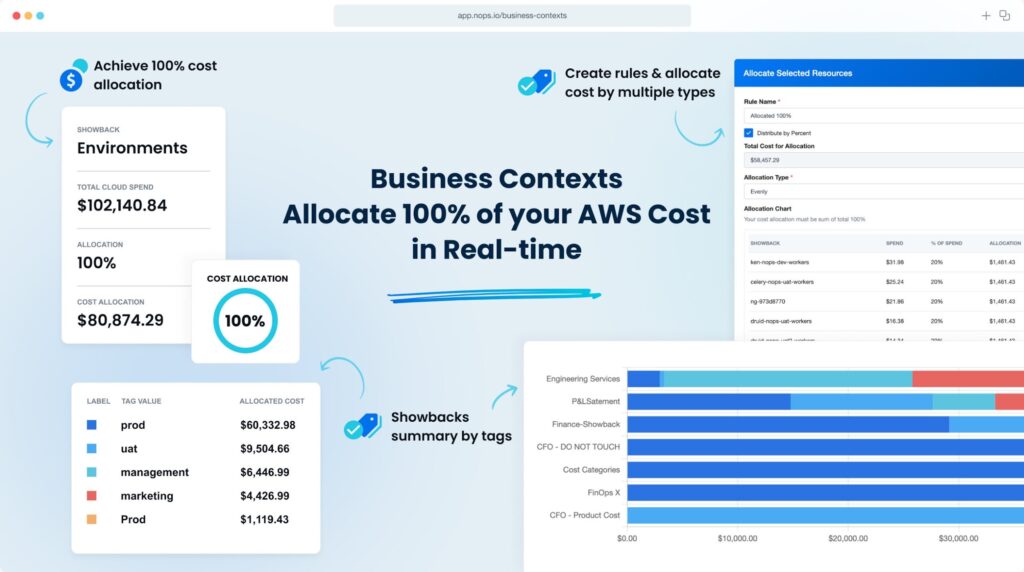
nOps is an ML-powered cloud cost optimization platform that helps cloud users reduce their costs by up to 50% on autopilot. It offers a suite of solutions tailored to engineers’ preferred tools and services — making it easy to take action on cloud cost optimization.
- Business Contexts: understand 100% of your AWS bill with cost allocation, chargebacks, showbacks, tagging, and intuitive filters for breaking down cloud spend
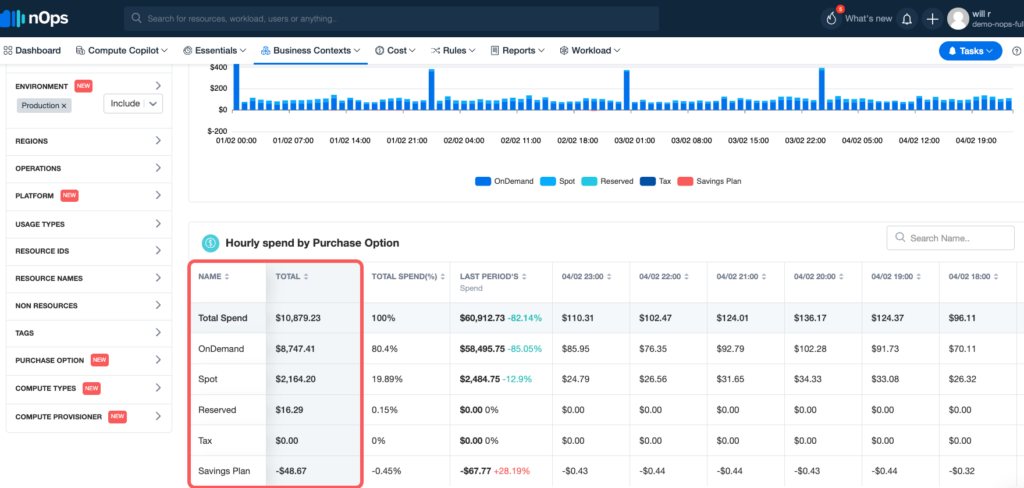
- Compute Copilot: automatically selects the optimal compute resource at the most cost-effective price in real time for you — also makes it easy to save with Spot discounts
- ShareSave: automatic life-cycle management of your EC2/RDS/EKS commitments with risk-free guarantee
- nOps Essentials: set of easy-apply cloud optimization features including EC2 and ASG rightsizing, resource scheduling, idle instance removal, storage optimization, and gp2 to gp3 migration
nOps processes over 1.5 billion dollars in cloud spend and was recently named #1 in G2’s cloud cost management category. You can book a demo to find out how nOps can help you start saving today.
2. AWS Cost Explorer:
AWS Cost Explorer is a native tool provided by Amazon Web Services (AWS) that helps businesses manage their AWS spending. It offers cost reports, analytics, cost forecasting, and budgeting tools. Cost Explorer also provides recommendations for cost optimization, including rightsizing recommendations for instances and reserved instances planning.
Amazon also offers an API that allows you to access Cost Explorer data through other AWS reporting or analytics tools.
3. Kubecost:
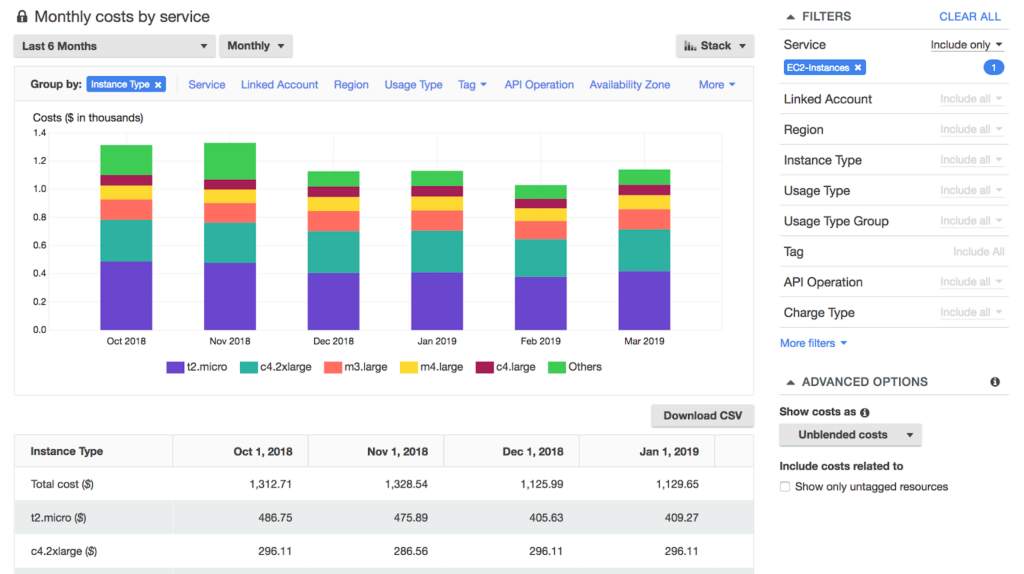
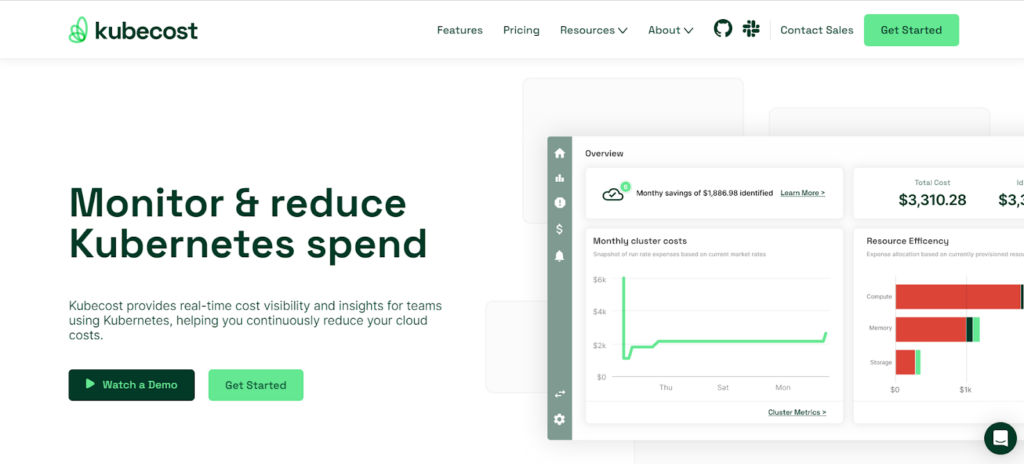
Kubecost is a cloud financial management tool designed specifically for Kubernetes clusters. It provides insights into Kubernetes resource usage and spending, allowing businesses to optimize their Kubernetes costs. The tool offers real-time analysis of Kubernetes spending, as well as detailed reports and analytics. Kubecost also provides recommendations for cost optimization, such as identifying inefficient resource usage and suggesting better allocation.
4. Cloudability
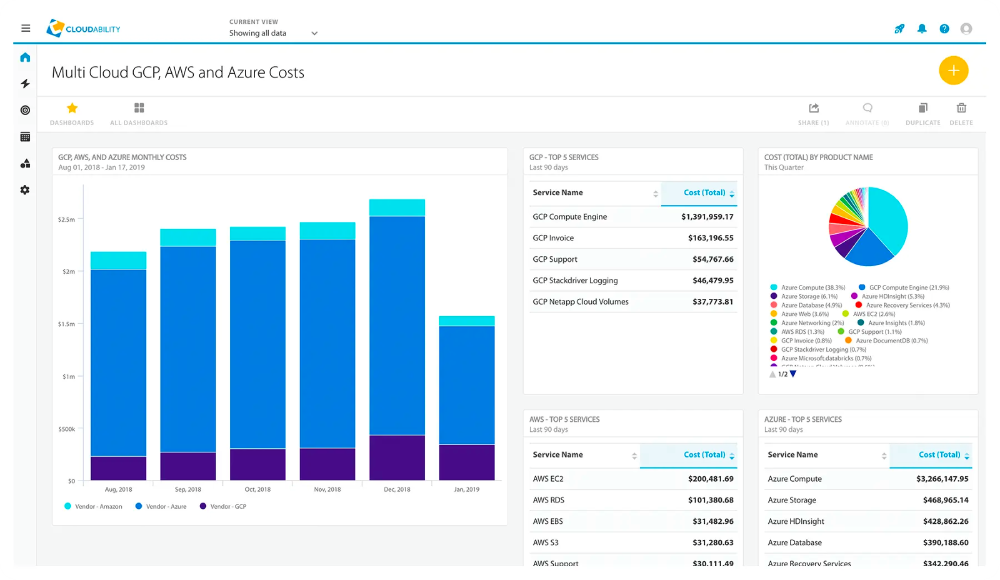
Apptio Cloudability is a cloud financial management platform that improves visibility and governance across cloud environments. It helps organizations optimize their cloud resources for cost, speed, and quality.
Cloudability provides budgeting, forecasting, and rightsizing features as part of its financial management solution. One major advantage of the tools is its FinOps focus. It helps executives correlate cloud spending to business value and helps Finance teams accurately track and forecast cloud spend for more robust budgeting.
While the tool has many financial and budgeting capabilities, it focuses less on linking cost changes and recommendations to the implementation side. Once Cloudability provides recommendations, it still falls to the engineering team to determine which recommendations to accept and how to take action on them.
5. CloudZero
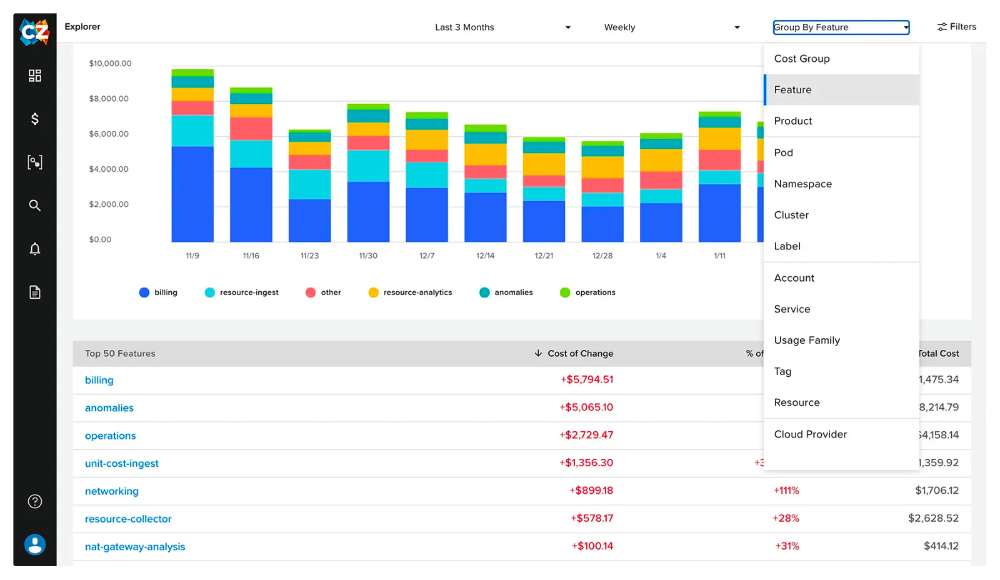
CloudZero is a cloud cost visibility and intelligence platform intelligence. It helps automate the collection, allocation, and analysis of cloud cost data to uncover savings opportunities and improve unit economics. Some of its top features include:
- Data normalization: helping to reconcile data from different sources
- Cost allocation: trace back shared costs to individual cost centers
- Cost optimization: suggestions for opportunities to reduce cloud waste
- Cloud budget management: more accurately track and forecast costs
CloudZero is currently usable with AWS, GCP and Kubernetes.
6. Densify
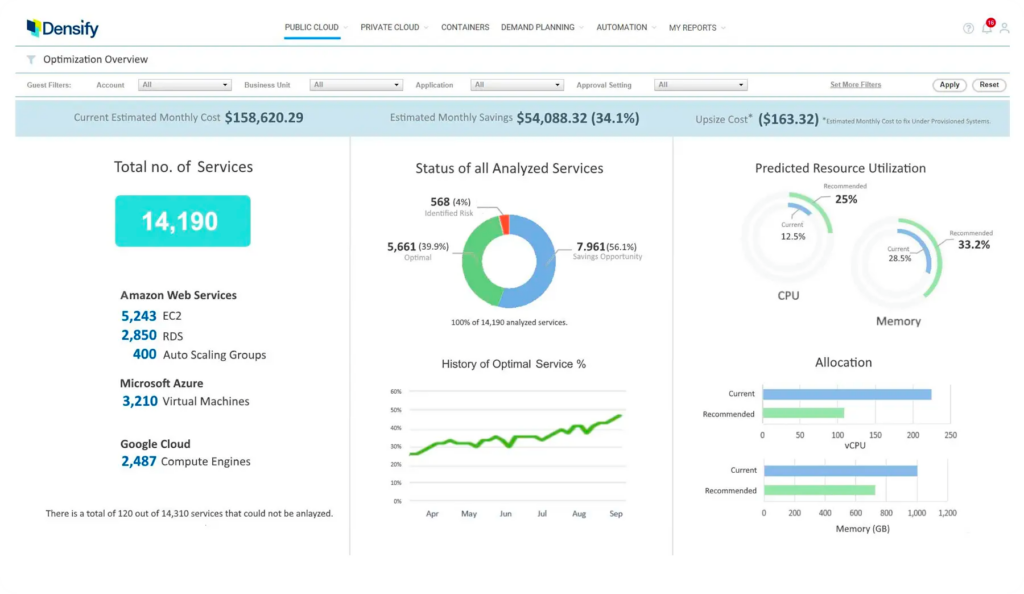
Densify is a cloud and container management platform used to automatically optimize your Kubernetes resources and configure your cloud instances. The platform is also known as Intel Cost Optimizer powered by Densify, and its license subscription is covered by Intel for qualifying organizations.
One of Densify’s strong points is its use of Machine Learning to perform deep analysis of workload characteristics and cloud provider capabilities, to continuously match cloud applications and services to the right cloud infrastructure. And the platform is flexible — it runs on multiple cloud services and is suitable for multicloud and hybrid cloud architectures.
7. CloudCheckr
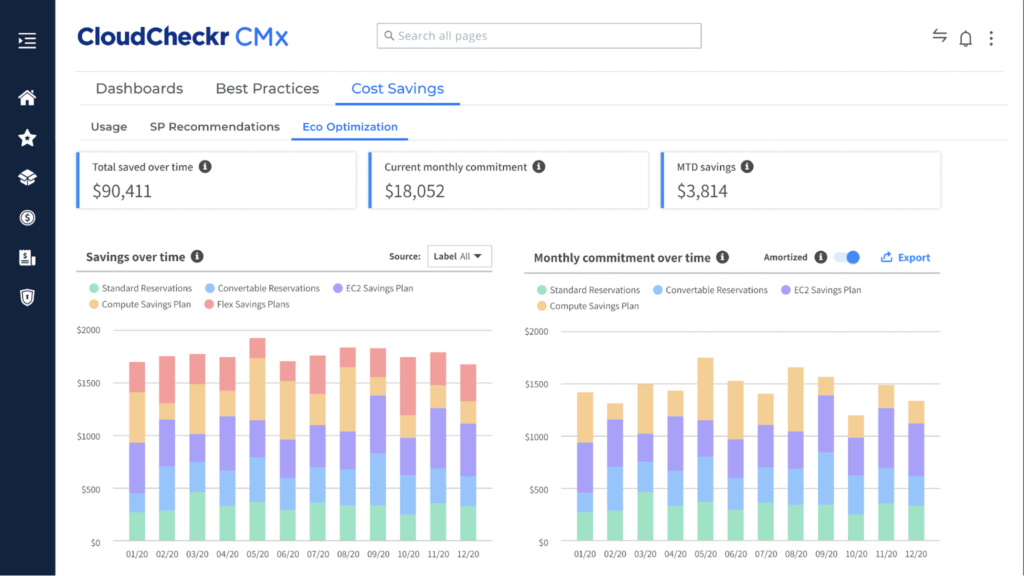
CloudCheckr, developed by Spot by NetApp, is a comprehensive cloud management platform aimed primarily at large enterprises and Managed Service Providers (MSPs). It offers a range of features to optimize cloud spend, enhance security and compliance, and improve overall cloud governance. The platform provides deep insights and analytics into cloud usage, enabling organizations to better manage their cloud infrastructure and optimize cloud computing costs. CloudCheckr supports multi-cloud environments, providing a unified view to manage and govern AWS and other public cloud services.
8. Datadog
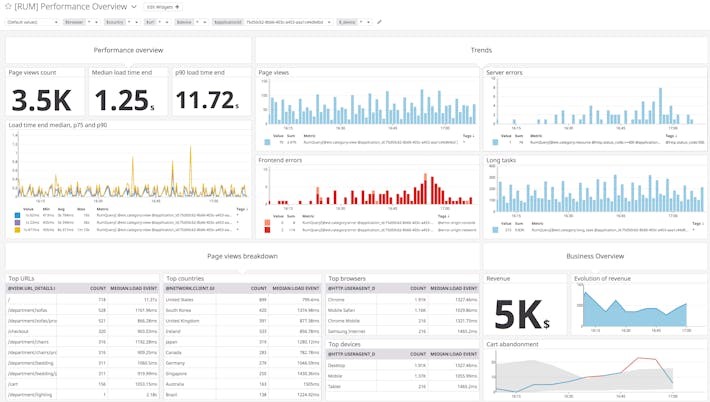
Datadog is one of the most popular monitoring and observability tools, aggregating metrics and events across the full DevOps stack. While it’s not purely a cloud financial management tool, Datadog Cloud Cost Management can help you optimize your cloud spending by delivering the cost data engineers need and with resource-level context like CPU, memory, and requests. This data is easily scoped to their services and applications so that they can take action and spend effectively.
Datadog also helps you drill down into your AWS or Azure bill, helping you to allocate your cloud costs and make better cost decisions with confidence. Recently, Datadog and nOps have partnered together to make it easy for engineers to take action on cloud waste.
9. Harness
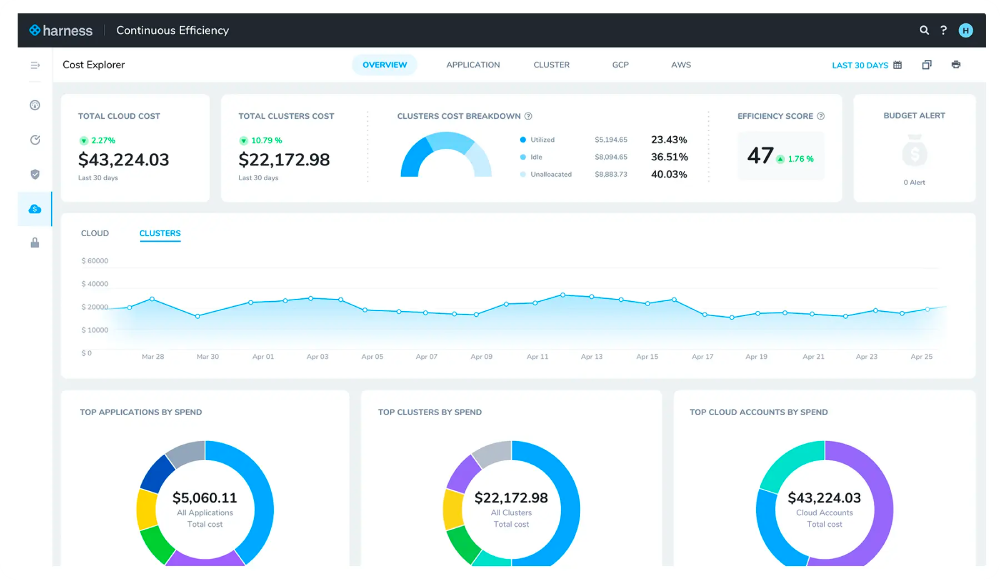
Harness is a CI/CD platform that helps manage cloud costs. It focuses on enhancing cost transparency, optimization, and governance through features such as Continuous Integration, Continuous Delivery, Feature Flags, Cloud Cost Management, Service Reliability Management, Security Testing Orchestration, and Chaos Engineering.
Harness provides suggestions for optimizing workloads for savings and helps automatically shut down idle cloud resources. However, it lacks some key cloud automation features and cloud cost optimization tools, such as Spot instance utilization and rightsizing.
10. Flexera
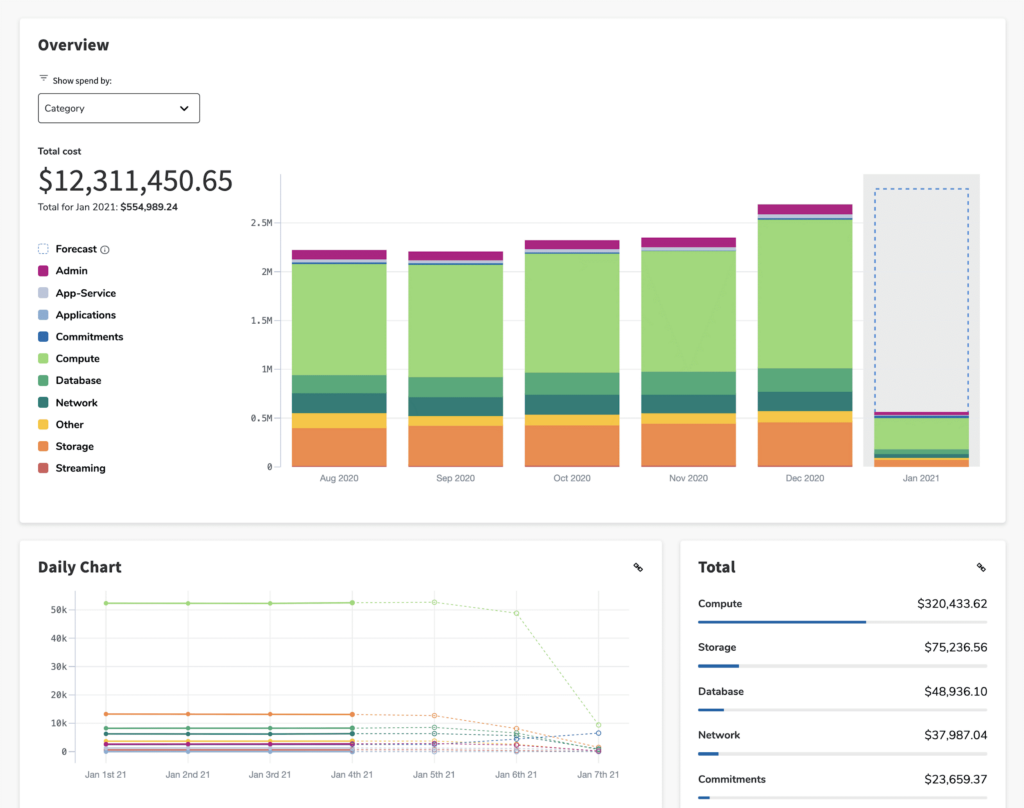
Flexera’s mission is to improve visibility, allocation and efficiency of cloud spend at scale. It provides actionable recommendations, budget controls, and cost policies to help your organization avoid surprises and reduce unnecessary cloud spend.
Flexera offers a number of automation tools to act on recommendations, making your cloud optimization and governance more scalable and efficient.
Best practices for optimizing cloud costs
In order to get the most out of cloud financial management, businesses should follow certain best practices. Here are some of the most important:
1. Allocate your cloud costs
Accurately attributing cloud costs to specific projects or departments ensures financial accountability and aids in budgeting. Step one is to leverage tagging to connect what you’re spending in AWS each month to the functions of your business to understand how resources are being used and by whom. This contextualization, whether it’s through different environments, business units, or teams, allows you to organize and understand your spending better.
Better visibility into your organization’s cloud spend and more granular cost and usage reporting provides actionable insight into where you are spending the most money — as well as opportunities for cost optimization.
2. Utilize Automation
Understanding your cloud costs is only part of the equation; an effective cloud financial management strategy also involves taking action to reduce cloud costs. However, manually investigating resources and implementing cost-saving recommendations can consume valuable engineering time and resources. Leveraging AI and automation tools can help streamline these processes and free up engineering teams to focus on building and innovation.
3. Manage your Commitments
In exchange for a commitment to spend a certain amount, AWS will offer a substantial discount on compute resources (up to 72-75% depending on various factors such as the length and flexibility of the commitment). However, it’s not always easy to determine the right type or amount of commitment to make to save the most. If you under-commit, you miss out on discounts. But if you over-commit, you’re paying for resources you don’t need.
Forecasting costs and planning commitments can be tricky. However, a general rule of thumb is to use Reserved Instances and Savings Plans for steady, predicable usage, and to cover spikes with On-Demand and Spot. Commitment management tools can help by precisely juggling your RI, SP and Spot usage and buying back and unused commitments.
4. Utilize Spot discounts
AWS Spot Instances are spare AWS (On-Demand) capacity that users can purchase at a heavy discount. However, it’s important to note that AWS gives you a discount on the instance, but not a guarantee that you’ll be able to use it to the end of your compute need. The instance can be taken away at any time with a 2-minute warning, potentially disrupting critical workloads. In addition, the Spot market can be volatile in terms of pricing and availability.
Luckily, tools can reduce much of the complexity involved in using Spot. By leveraging Machine Learning to analyze the market, your usage, and other dynamic factors, they can put you on the most reliable and cost-effective Spot options automatically.
5. Rightsize cloud resources
As your usage patterns evolve, you’ll find that some applications no longer need as many resources available to them as they once did. It’s essential to continually right size these applications so that you’re not overpaying for oversized or unnecessary instances. By analyzing historical usage and performance, you can identify and eliminate cloud waste and unnecessary spending.
6. Schedule QA and Dev environments
Scheduling start and stop times for development and testing environments can cut unnecessary costs during off-hours. Tools can help learn your usage patterns and automatically schedule your resources to turn off when your team doesn’t need them.

How nOps can help with Cloud Financial Management?
nOps is an ML-powered FinOps automation platform that helps AWS users optimize their cloud infrastructure for minimal engineering effort. The platform offers an all-in-one suite of cloud optimization solutions, including nOps Business Contexts for understanding 100% of your AWS bill with cost allocation, chargebacks, showbacks, and tagging.
nOps was recently ranked #1 in G2’s cloud cost management category, and we optimize $1.5 billion in cloud spend for our customers.
Join our customers using nOps to understand your cloud costs and leverage automation with complete confidence by booking a demo today!

